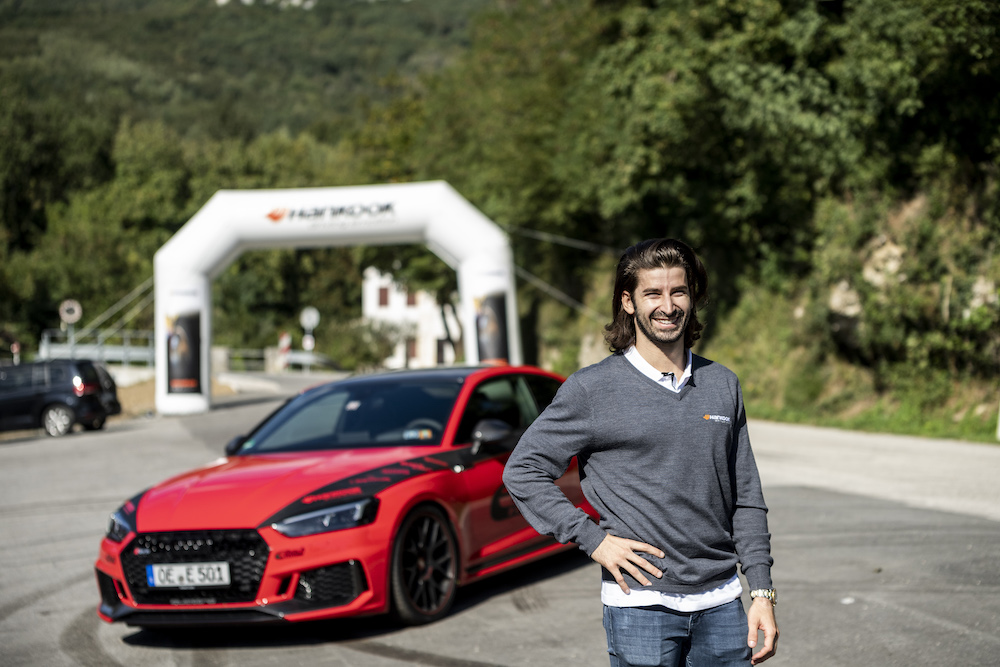TTI‘s regular series asks industry experts to talk about their careers
Aleix Alcaraz
Senior engineer, subjective tire evaluation, Hankook Tire & Technology
What was your career path to the position you hold now?
I started driving when I was three years old as my father was involved in motorsport. When I was seven years old, I participated in my very first official karting race. I continued kart racing until I turned 16 years old, during which time I won several international races. Then I stepped up from karting to single seaters, racing in the Formula Renault 2.0 Eurocup and Formula 2.0 Italy. My career as a racing driver continued for some time, and I joined the Young Drivers program in Catalonia. However budget was significantly capped due to an economic downturn. Then my former team mate and friend Miguel Molina, who at that time was racing in the DTM for Audi, introduced me to Hankook. The company was looking for a driver with a motorsport background and a good feeling for the tires. I have been working for Hankook as a subjective test driver since 2012.
Please describe a typical day.
I leave home early in the morning to get to Applus IDIADA proving ground where Hankook has a base. I know our weekly testing schedule one week in advance. Each morning we have a team meeting to discuss what will be tested that day and exchange information with the mechanics on site. Then we usually test for the whole day, with a lunch break at 12pm. After testing is finished, I finalize the report on the tire’s performance with my ratings and comments, and share this with the development crew. Often I go straight to the gym after work as it is important to keep in good physical condition in this job.
How long might a typical day last?
It is vital to maintain a very high level of concentration [when undertaking tests] to evaluate the tire’s performance properly. [How long the day lasts] depends on how many tires we have to test on that specific day. Even though a single test drive may only take a short amount of time, a lot of other things must be done as part of the testing, too. For example, we have to discuss the test results with the developers along with what needs to be improved and the next steps for development.
How many different projects might you be working on at any one time?
In a single day we only focus on one project, but overall, as I am in charge of different platforms/cars and tire sizes, so I might be working on around 8-10 different projects at one time.
How do you document your work?
We have a report template that we use to rate the performance of the tire in each area and write our subjective feedback. We also have a direct line of contact with the developers so we can discuss feelings and results while driving.
What is the team structure?
My team is part of the Europe Technical Centre located in Hannover. We are based at Applus IDIADA but sometimes we have to travel to other places to carry out testing. We are like a family; we see each other almost every day and the [working] atmosphere is very relaxed. It’s an international team with [individuals from] five nationalities. I find it interesting getting to know people from other countries and cultures while at work.
What are the best and worst parts of your job?
I love that it is part of my job to drive sportcars and other high-end [vehicle] models on a daily basis and to their limits, while evaluating the tire performance, as driving is my passion. Also, the automotive industry is so big and getting to know people from other companies while traveling is a good experience. It is very rewarding to follow a tire’s development step by step and see the improvements in-between every loop. When I see the tire performance improving, it feels good knowing that my comments and suggestions have been taken into consideration, and have contributed [to its development] in the right direction.
The worst part is that I need to have very high concentration levels throughout the entire test session to uncover the very small differences. If I am not concentrating enough, I could send the development in the wrong direction. That’s a really big responsibility. For that reason, when I am in the car, I have to put aside anything that could distract me and totally focus on the car and the tire performance. On a very tricky project, it can be a challenge to achieve an end goal together with the developers and improve the tire’s performance to the desired level.
How do you expect your job role to evolve as tire technology develops for the next generation of vehicles?
Tire and vehicle technology are evolving very quickly and a few years ago the tire industry’s focus began to change. Different tire requirements from the [automotive] OEMs have led us in the direction of new research methods, new materials to fulfill performance targets, and solutions that may have been deemed impossible only a couple of years ago – things that have now become a reality. I’m very excited to see what the future brings and be part of this continued development.



